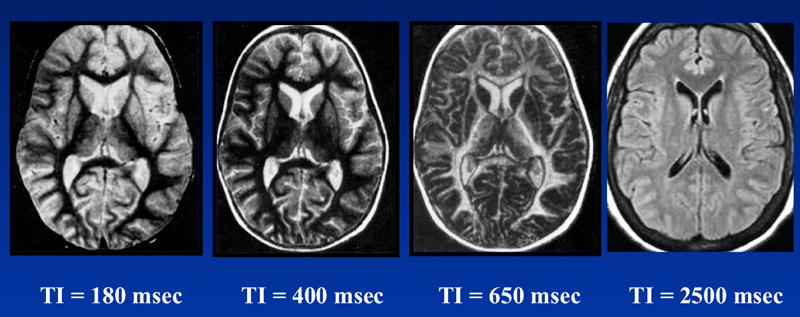The effect of TE is readily apparent, appearing in the multiplier term e−TE/T2. If TE is short compared to T2, the exponential term converges to unity and the T2 sensitivity is minimized. Conversely, if TE is the same or longer than T2, then this term becomes large and T2-weighting of the IR sequence is accentuated.
The effects of TR and TI on image contrast are not immediately obvious. You will recall that in SE imaging, the TR value controls T1-weighting through a term of the form e−TR/T1. Even though there is a similar exponential term in the IR equation above, there is a second term (−2e−TI/T1) that also contains T1. In general, therefore, the TR value does not tightly control T1-weighting in IR sequences like it does in SE sequences. T1-weighting is primarily determined by the TI value selected. The only real adjustment needed for TR is to make sure it is long enough to allow enough slices to be acquired and sufficiently long to allow enough tissue recovery to generate a usable signal.
Advanced Discussion (show/hide)»
Bydder GM, Young IR. MR imaging: clinical use of the inversion recovery sequence. J Comput Assist Tomogr 1985; 9:659-675.
Hornak JP. The Basics of MRI (www.cis.rit.edu/htbooks/mri/), 2013. (A derivation of the signal intensity equation for IR given above can be found there).
What is the inversion recovery pulse sequence?
What is phase-sensitive IR and why does it have a gray background?


